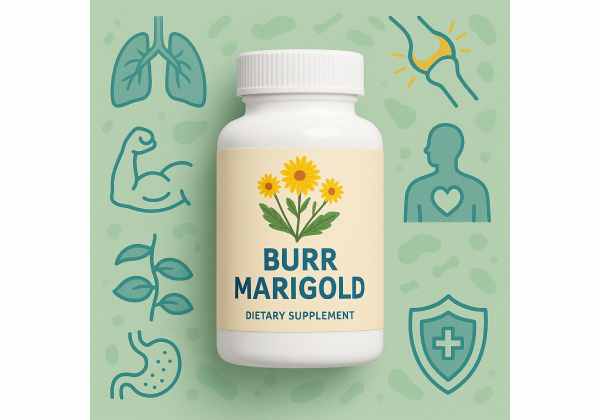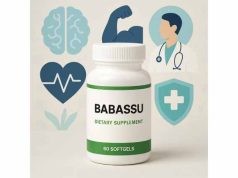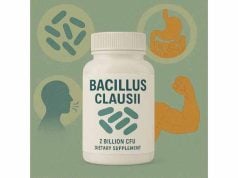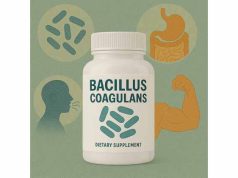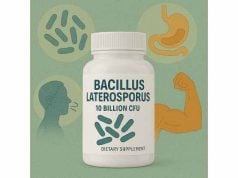Burr marigold (Bidens tripartita) is a time-honored herbal remedy celebrated for its diverse healing properties and gentle efficacy. This aquatic plant, found in wetlands and riverbanks across Europe, Asia, and North America, has long been used in traditional medicine to support skin health, digestion, and immunity. Modern research is starting to validate many of these ancient claims, highlighting burr marigold’s rich array of bioactive compounds, such as flavonoids and polyphenols. Whether you’re seeking natural support for inflammation, liver health, or skin issues, understanding the evidence-based benefits, practical applications, and potential side effects of burr marigold can help you use this botanical safely and effectively.
Key Takeaways
- Multi-Action Herbal Support: Burr marigold is used for skin, digestive, liver, and immune health thanks to its anti-inflammatory and antioxidant properties.
- Traditional and Modern Uses: Utilized in teas, tinctures, and topical preparations for eczema, indigestion, and minor wounds.
- Rich in Plant Compounds: Contains high levels of flavonoids and phenolic acids that may help protect cells and reduce inflammation.
- Generally Well-Tolerated: Side effects are rare with proper use, but always start with a small dose and consult your healthcare provider.
- Integrates Easily: Can be taken as a tea, extract, or applied topically, making it a versatile option for natural wellness routines.
Table of Contents
- Burr Marigold Overview: History and Traditional Medicinal Applications
- Science of Burr Marigold: Bioactive Compounds and Mechanisms
- Proven Health Benefits and Evidence-Based Uses of Burr Marigold
- Burr Marigold Safety Profile, Side Effects, and Drug Interactions
- Best Practices, Dosage Forms, and How to Use Burr Marigold Safely
- Burr Marigold Frequently Asked Questions (FAQ)
Burr Marigold Overview: History and Traditional Medicinal Applications
Burr marigold, also known as Bidens tripartita or “three-lobed beggarticks,” is a modest but potent member of the Asteraceae family. Recognized by its deeply divided leaves and distinctive barbed seeds, burr marigold has a storied place in the folk medicine traditions of Europe, Russia, China, and the Americas. Despite its unassuming appearance, this wetland plant has been valued for its ability to address a variety of health issues, especially those related to the skin, digestive tract, and immune system.
Origins and Botanical Description
- Scientific name: Bidens tripartita
- Common names: Burr marigold, three-lobed beggarticks, water agrimony
- Native regions: Europe, Asia, North America
- Plant features: Grows along riverbanks and wetlands, with yellow flowers and hooked seeds that cling to clothing and fur.
Traditional Uses Across Cultures
European and Russian Herbalism:
Burr marigold tea and infusions have been employed for centuries as a gentle remedy for:
- Skin eruptions, eczema, and rashes
- Liver and gallbladder support
- Calming digestive upsets, such as diarrhea or mild dyspepsia
- Cleansing the body of “toxins” or waste
Traditional Chinese Medicine (TCM):
Burr marigold is often used to “clear heat and toxins,” reduce swelling, and stop bleeding. TCM practitioners may recommend it for skin issues, gastrointestinal discomfort, and as part of herbal blends for fever or inflammation.
North American Indigenous Uses:
Native peoples have used Bidens species for wound care, as poultices for cuts and sores, and in teas to address coughs, colds, or digestive disturbances.
Key Forms and Preparations
- Tea/Infusion: The dried aerial parts (stems, leaves, and flowers) are steeped in hot water to make a cleansing, bitter herbal tea.
- Tincture: Alcoholic extracts concentrate burr marigold’s active constituents for easy dosing.
- Topical applications: Used as washes, compresses, or ointments for eczema, wounds, or insect bites.
- Powdered supplements: Less common, but sometimes included in multi-herb blends.
Symbolism and Folklore
The plant’s hooked seeds inspired the “beggarticks” name, as they stick stubbornly to animals and humans alike. This persistent quality was mirrored in its reputation as a plant that “clings” to disease and removes it from the body—a popular folk belief among herbalists.
Widespread Accessibility
Because it thrives in wet, disturbed areas, burr marigold is easy to find and harvest sustainably in many regions. This accessibility has helped preserve its traditional use across generations and cultures.
Summary of Traditional Reputations
- Skin healer: Applied to inflamed, itchy, or infected skin conditions
- Digestive tonic: Eases stomach upset and helps restore gut balance
- Liver cleanser: Used in spring “detox” or liver support teas
- Mild astringent: Supports wound healing and reduces excessive bleeding
While much of burr marigold’s reputation is rooted in folk medicine, an increasing number of modern studies are beginning to investigate the science behind these age-old practices.
Science of Burr Marigold: Bioactive Compounds and Mechanisms
The effectiveness of burr marigold as a natural remedy lies in its complex mix of phytochemicals, which provide broad-spectrum biological activity. Let’s explore the main compounds, how they function in the body, and what modern science reveals about their health-promoting potential.
Key Phytochemical Groups
- Flavonoids: Including luteolin, quercetin, and apigenin—recognized for strong antioxidant, anti-inflammatory, and cell-protective effects.
- Phenolic acids: Caffeic, chlorogenic, and ferulic acids that help neutralize free radicals and support liver health.
- Tannins: Contribute astringent properties that can soothe mucous membranes and help wounds heal.
- Volatile oils and polysaccharides: May enhance immune function and provide mild antimicrobial effects.
Biological Actions and Mechanisms
1. Antioxidant Protection
Burr marigold is exceptionally rich in antioxidants. These compounds scavenge damaging free radicals, helping to protect cells from oxidative stress—a factor in aging, chronic inflammation, and the development of disease.
- Supports skin repair: Antioxidants can reduce damage from sun exposure and promote healing of irritated or inflamed skin.
- Liver and detox support: Helps the body process and eliminate metabolic waste more efficiently.
2. Anti-Inflammatory Effects
Multiple flavonoids and phenolic acids in burr marigold help regulate inflammatory pathways:
- Inhibit pro-inflammatory cytokines: These molecules drive many skin, gut, and systemic inflammatory conditions.
- Soothes skin and mucous membranes: Reduces swelling, redness, and irritation, both internally and externally.
3. Astringent and Hemostatic Properties
- Tannins in burr marigold tighten and tone tissues, which can:
- Reduce minor bleeding from wounds or irritated gums
- Speed healing by creating a protective barrier
- Firm up loose stools during diarrhea
4. Immunomodulatory and Antimicrobial Actions
- Polysaccharides may support immune response by enhancing macrophage activity.
- Volatile oils and certain flavonoids provide mild antibacterial and antifungal activity, which may help prevent secondary infections in minor wounds or inflamed skin.
5. Liver and Gallbladder Support
Laboratory and animal studies indicate that burr marigold extracts can:
- Support bile flow and help relieve mild digestive sluggishness
- Reduce markers of liver inflammation and oxidative damage
Absorption and Bioavailability
- Teas and infusions: Provide a gentle, cumulative effect as water-soluble compounds are absorbed gradually.
- Alcoholic tinctures: Offer concentrated doses and better extraction of some phytochemicals.
- Topical applications: Allow direct action on skin or mucous membranes with minimal systemic absorption.
Modern Research and Validation
While much more research is needed, modern studies increasingly support burr marigold’s role in:
- Reducing skin inflammation and irritation
- Supporting liver detoxification and antioxidant defense
- Helping balance immune response in chronic or recurring conditions
Summary: How Burr Marigold Works in the Body
- Neutralizes oxidative stress and supports cell protection
- Reduces inflammation at the cellular level
- Tones tissues and speeds healing of skin and mucous membranes
- May gently stimulate bile flow and support liver health
- Helps the body defend against minor bacterial and fungal invaders
Proven Health Benefits and Evidence-Based Uses of Burr Marigold
Burr marigold’s reputation as a versatile herbal remedy is increasingly validated by modern research. Here’s a deep dive into its most widely recognized, evidence-based uses—and what to expect when adding burr marigold to your wellness routine.
1. Skin Health and Topical Healing
Eczema, Dermatitis, and Minor Wounds:
Burr marigold’s flavonoids and tannins make it a gentle yet effective choice for soothing inflamed, itchy, or infected skin. Applied as a wash, compress, or ointment, it may:
- Reduce redness and irritation in eczema or dermatitis
- Speed healing of scrapes, insect bites, and minor wounds
- Soothe diaper rash or other childhood skin issues
How it works:
Its antioxidants protect skin cells, while tannins form a gentle barrier that locks in moisture and prevents infection.
2. Digestive Relief and Gut Health
- Anti-diarrheal action: Burr marigold tea or tincture is a traditional remedy for diarrhea, especially when accompanied by mild gut inflammation.
- Astringent effect: Tannins help firm up loose stools and soothe irritated intestinal lining.
- Relieves heartburn or indigestion: Traditional European use includes burr marigold as a bitter tonic for digestive sluggishness and mild dyspepsia.
3. Liver Detoxification and Gallbladder Support
- Promotes bile flow: May help with mild symptoms of poor digestion, such as bloating or a feeling of fullness after fatty meals.
- Protects liver cells: Antioxidant compounds counteract oxidative damage, supporting overall liver function.
4. Immune System Modulation
- Gentle immune support: Regular use may help the body resist common infections, especially when combined with other supportive herbs.
- Mild antimicrobial effects: Applied to wounds or taken as tea, burr marigold may help prevent minor bacterial or fungal infections.
5. Bleeding and Wound Healing
- Stops minor bleeding: Astringent and hemostatic effects make burr marigold useful for nosebleeds, gum bleeding, or superficial cuts.
- Promotes tissue repair: Tannins and flavonoids encourage new tissue growth and reduce inflammation at the wound site.
6. Support for Allergies and Chronic Inflammation
- Reduces histamine release: Some studies suggest burr marigold may help calm allergic responses by stabilizing mast cells.
- Helps with chronic inflammatory conditions: Used long-term, it may provide gentle relief from conditions like chronic sinusitis or recurring rashes.
7. Additional Traditional and Integrative Uses
- Spring cleansing tonic: Popular in European herbalism for post-winter “detox” and revitalization.
- Support during colds and flus: Teas are sometimes used for sore throats, coughs, or mild fevers.
Who May Benefit Most?
- Individuals with sensitive or inflamed skin
- Those seeking gentle digestive or liver support
- People interested in natural approaches to immune health or wound healing
Realistic Expectations
Burr marigold works best as a gentle, cumulative remedy. For acute issues, results may be noticed in a few days. For chronic conditions, consistent use over several weeks is often needed.
Burr Marigold Safety Profile, Side Effects, and Drug Interactions
Burr marigold is regarded as a safe and gentle botanical for most people, thanks to its long history in traditional medicine and generally mild action. However, like any supplement, it is not entirely free from risks—especially if misused or combined with certain medications. Understanding its safety profile, possible side effects, and drug interactions will help you use burr marigold responsibly and get the most benefit.
1. General Safety and Tolerability
When consumed as a tea, tincture, or topical preparation in recommended doses, burr marigold rarely causes adverse effects. Most users, including children and the elderly, tolerate it well when taken for short periods or as directed by a qualified practitioner.
Traditional safety advantages:
- Used for generations in European, Russian, and Chinese medicine
- No serious toxicity reported with typical use of aerial parts (leaves, stems, flowers)
- Often included in children’s remedies for skin and digestive upsets
2. Possible Side Effects
Although uncommon, certain side effects can occur, especially if large doses are used or if there is an underlying sensitivity. Watch for:
- Gastrointestinal upset: Nausea, mild diarrhea, or stomach discomfort may occur, especially with concentrated tinctures or excessive tea consumption.
- Allergic reactions: Individuals allergic to plants in the Asteraceae family (such as chamomile or ragweed) may develop rash, itching, or, in rare cases, swelling.
- Skin irritation: Rarely, topical application can cause mild redness or irritation, especially if applied to already broken or very sensitive skin.
3. Drug and Supplement Interactions
Burr marigold is not widely known to interact with medications, but a few precautions are advised:
- Blood thinners and anticoagulants: Its mild astringent and hemostatic effects could theoretically enhance the effects of blood thinners. Monitor for unusual bleeding or bruising if used together.
- Diuretics and dehydration: Burr marigold has a mild diuretic effect; combining with other diuretic herbs or drugs could increase risk of dehydration or low potassium.
- Other liver-acting herbs: If you use multiple herbs or supplements aimed at supporting liver detoxification, monitor for signs of over-stimulation, such as digestive upset or fatigue.
4. Contraindications: Who Should Avoid Burr Marigold?
- Pregnant and breastfeeding women: Limited safety data exist; use only under medical supervision.
- Infants under 1 year: Not recommended for very young children except under the direction of a pediatric herbalist.
- Individuals with plant allergies: Especially those allergic to other Asteraceae species.
5. Signs of Adverse Reaction or Overdose
If you notice any of the following after taking burr marigold, discontinue use and seek medical advice:
- Persistent digestive upset or diarrhea
- Skin rash, hives, or swelling
- Difficulty breathing or swallowing (emergency)
- Signs of dehydration (thirst, dark urine, dizziness)
6. Responsible Use and Quality Control
- Choose quality products: Opt for burr marigold from reputable, transparent brands with clear labeling and third-party testing.
- Check plant identification: Use only Bidens tripartita; avoid wild-harvesting unless you’re confident in plant identification, as some look-alikes may not be safe.
- Monitor dosage: Start low and increase gradually as needed.
7. Environmental Impact and Ethical Harvesting
Burr marigold is abundant in many regions and generally not at risk of overharvest. Still, always choose sustainably sourced products and avoid damaging wild habitats.
Safety Recap
- Generally safe in recommended doses for most healthy adults and children.
- Rare side effects are possible, primarily allergic or digestive in nature.
- Consult a healthcare provider if you have underlying health issues, are taking medications, or plan to use burr marigold regularly.
Best Practices, Dosage Forms, and How to Use Burr Marigold Safely
Using burr marigold for optimal results means understanding the best forms, recommended dosages, and how to integrate it into your daily routine. Here’s a practical guide for safe and effective use—whether your goal is skin, digestive, or liver support.
1. Dosage Guidelines
Recommended dosages vary based on the intended use, preparation, and age group. Below are general guidelines, but always follow the instructions on your supplement or consult with an herbalist.
- Herbal Tea (Infusion): Steep 1–2 teaspoons of dried aerial parts (about 2–4 grams) in a cup of hot water for 10–15 minutes. Drink 1–3 cups daily for general wellness, skin, or digestive support.
- Tincture (Alcoholic Extract): Take 1–2 ml (approx. 20–40 drops) diluted in water, 2–3 times daily.
- Topical Use: Apply cool, strained tea or tincture (diluted 1:5 with water) as a wash or compress to affected skin areas 1–3 times daily.
- Powdered Supplements: Less common, but 500–1000 mg capsules can be taken 1–2 times per day as directed by the manufacturer.
2. Best Practices for Preparation and Use
- Use fresh or well-preserved dried plant material for maximum potency.
- Combine with other herbs (like calendula, chamomile, or dandelion) for synergistic effects on skin or digestion.
- Apply to clean skin if using topically; avoid open wounds unless directed by a professional.
3. When and How to Take
- For skin issues: Apply compresses or washes after cleansing the area, up to three times a day.
- For digestive support: Drink tea before or after meals, depending on whether the goal is to soothe irritation (before) or aid digestion (after).
- For liver support: Use regularly for several weeks as part of a spring cleanse or under the guidance of a practitioner.
4. Combining with Other Supplements
Burr marigold is often paired with:
- Calendula or chamomile: For enhanced skin soothing and anti-inflammatory action.
- Milk thistle or dandelion: For liver and digestive blends.
- Elderflower or yarrow: For cold and flu support in traditional herbal teas.
Avoid combining with strong diuretics or blood thinners unless under supervision.
5. Special Considerations for Children and Older Adults
- Children: Use lower doses; start with weak teas or compresses and increase gradually as needed.
- Elderly: Generally safe, but monitor for dehydration or excessive diuretic effects with high doses.
6. Storing Burr Marigold
- Keep dried herbs in a cool, dry, and dark place to preserve their potency.
- Tinctures and extracts should be tightly sealed and kept away from direct sunlight.
7. Choosing Quality Supplements
Look for:
- Clear botanical labeling (Bidens tripartita)
- Organic or sustainably wild-harvested sources
- Transparent ingredient lists with no unnecessary fillers or additives
What to Expect
- Effects are typically gentle and cumulative—noticeable within a few days for acute conditions or over several weeks for chronic issues.
- Burr marigold is best used as part of a holistic approach that includes good nutrition, hydration, and stress management.
Burr Marigold Frequently Asked Questions (FAQ)
What is burr marigold used for in herbal medicine?
Burr marigold is used for soothing skin irritations, supporting digestive and liver health, and helping with minor wounds or bleeding. It’s also valued for its gentle detoxifying and anti-inflammatory effects in traditional herbal systems.
Is burr marigold safe to use every day?
Yes, when taken at recommended doses, burr marigold is generally safe for daily use by most healthy adults and older children. However, long-term or high-dose use should be monitored by a qualified herbalist or healthcare provider.
Can burr marigold help with eczema and skin rashes?
Burr marigold is a traditional remedy for eczema, dermatitis, and other skin rashes. Used topically as a wash or compress, it can reduce inflammation, itching, and redness, often as part of a broader skin-care routine.
Are there any side effects of burr marigold supplements?
Side effects are rare, but some users may experience mild digestive upset or allergic reactions, especially if sensitive to the Asteraceae plant family. Always start with a small dose and discontinue use if any irritation develops.
Does burr marigold interact with medications?
Burr marigold may theoretically increase the effects of blood thinners or diuretics, though significant interactions are uncommon. Always check with your healthcare provider if you’re on medication or have a chronic health condition.
How should I take burr marigold for liver or digestive health?
For liver and digestive support, drink 1–2 cups of burr marigold tea daily, or use a tincture as directed. Consistency is key—effects are typically gradual and best achieved with regular use.
Can children use burr marigold?
Children over one year can safely use diluted burr marigold tea or topical preparations for minor skin and digestive issues, but always use lower doses and consult a pediatric herbalist for guidance.
Disclaimer:
The information presented here is for educational purposes only and does not constitute medical advice. Always consult a qualified healthcare professional before beginning any new supplement, especially if you are pregnant, nursing, have a chronic health condition, or are taking medications.
If you found this article helpful, please share it on Facebook, X (formerly Twitter), or your favorite platform—and follow us for more natural health insights. Your support helps us continue providing evidence-based wellness resources!

